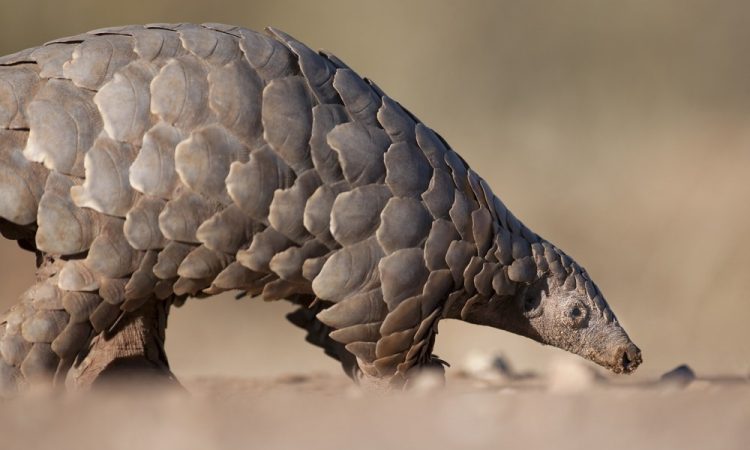Papillomaviruses are non-enveloped, double-stranded DNA (dsDNA) viruses with a circular genome. Infection with these viruses can lead to several clinical symptoms ranging from subclinical, cutaneous, and mucosal warts to cancerous lesions in vertebrate hosts.
A new study published in the journal Biology Letters identifies two novel lineages of papillomaviruses by mining the genome data of Chinese and Malayan pangolins.

Drug Discovery eBook

Study: Discovery of novel papillomaviruses in the critically endangered Malayan and Chinese pangolins. Image Credit: 2630ben / Shutterstock.com
What are pangolins?
Pangolins are nocturnal, scaly, and insectivorous mammals that belong to the order Pholidota. The Phataginus and Smutsia genera are found in Africa, whereas the Manis genera are found in Asia.
Four different species of pangolin reside in Asia, of which include the Philippine pangolin (Manis culionensis), Indian pangolin (Manis crassicaudata), Malayan pangolin (Manis javanica), and Chinese pangolin (Manis pentadactyla). The International Union for the Conservation of Nature (IUCN) has designated the Philippine, Malayan, and Chinese pangolins as critically endangered species due to their population decline due to overexploitation and trafficking of their scales.
Recently, pangolins have emerged as potential viral disease hosts after coronaviruses related to the severe acute respiratory syndrome coronavirus 2 (SARS-CoV-2) were reported in Malayan pangolins. In addition, pangolins have also been implicated as hosts for other ribonucleic acid (RNA) viruses such as picornaviruses, pneumoviruses, reoviruses, flaviviruses, and canine distemper virus (Paramyxoviridae).
The diversity of DNA viruses and their disease association in pangolins remains unclear.
About the study
The current study's researchers discovered an unidentified papillomavirus contig in pangolins and subsequently screened this sample using the tblastn algorithm. Annotation of the 7307-bp contig was done using the PuMA pipeline, which corresponded to a full papillomavirus genome that encoded E1, E2, E6, E7, L1, and L2 proteins, along with two spliced products.
Thereafter, the short-read data of re-sequenced genomes of 22 Chinese pangolins and 72 Malayan pangolins were screened. First, the short-read sequences with more than 100 significant matches were downloaded, followed by their de novo assembly.
Genomic sequences were sorted into forward, orphan, and reverse reads. Finally, annotation of the contigs of complete viral genomes was done using PuMA.
Examining L1 gene contigs allowed for detecting an intact L1 open reading frame. Estimating the isoelectric point and molecular weight of predicted protein products was performed using ExPASy. Magic-BLAST was used to calculate the coverage of the assembled sequences.
Bayesian phylogeny of the E1 and L1 proteins was performed to study the systematics of these viruses using papillomaviruses recognized by the ICTV and the Tupaia belangeri papillomavirus 1 (TbelPV1) and Tupaiabelangeri papillomavirus 2 (TbelPV2).
Study findings
Significant hits to papillomaviruses were identified in 11 out of 22 samples from Chinese pangolins and 36 out of 73 Malayan pangolin samples. All samples with known geographical provinces originated from the Yunnan province of China.
Notably, one Chinese pangolin sample and ten Malayan pangolin samples had more than 100 significant hits. These samples were subsequently selected for genome assemblies, in which two new papillomavirus genomes were assembled, along with the reassembled genome for the reference contig.
The complete L1 gene was assembled for three of these samples. Moreover, three different L1 gene contigs were assembled from a single Chinese pangolin.
The assembled genome was between 7,253 and 7,437 base pairs (bp), with a guanine-cytosine (GC) content between 39.84%-40.09%.
All three genomes contained E1, E2, E6, E7, L1, and L2 proteins, as well as two spliced products. Additionally, seven of the eight L1 sequences were categorized into a monophyletic group and grouped as the sister lineage to TbelPV1. The E1 clade was also placed as the sister of TbelPV1.
Only one protein sequence from a Chinese pangolin belonged to different clades, including Dyodeltapapillomavirus, Alphapapillomavirus, and Omegapapillomavirus.
Conclusions
The current study identifies Southeast Asia pangolins as hosts of highly prevalent and diverse papillomaviruses. These findings highlight the importance of in silico mining of host sequencing data for screening novel viruses. Further studies are needed to better understand papillomaviruses' impact on pangolins and develop strategies for conserving these animals.
- Barreat, J. G. N., Kamada, A. J., Reuben de Souza, C., et al. (2023). Discovery of novel papillomaviruses in the critically endangered Malayan and Chinese pangolins. Biology Letters. doi:10.1098/rsbl.2022.0464.
Posted in: Medical Science News | Medical Research News | Disease/Infection News
Tags: Coronavirus, Cytosine, DNA, Gene, Genome, Genomic, Guanine, Phylogeny, Protein, Respiratory, Ribonucleic Acid, RNA, SARS, SARS-CoV-2, Severe Acute Respiratory, Severe Acute Respiratory Syndrome, Syndrome, Viral Disease, Virus

Written by
Suchandrima Bhowmik
Suchandrima has a Bachelor of Science (B.Sc.) degree in Microbiology and a Master of Science (M.Sc.) degree in Microbiology from the University of Calcutta, India. The study of health and diseases was always very important to her. In addition to Microbiology, she also gained extensive knowledge in Biochemistry, Immunology, Medical Microbiology, Metabolism, and Biotechnology as part of her master's degree.
Source: Read Full Article
